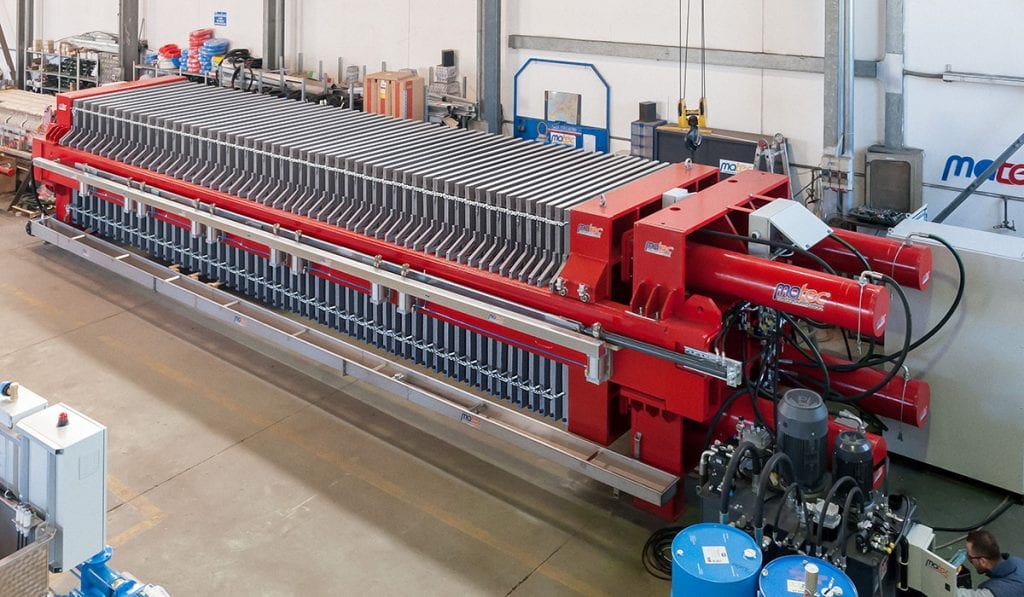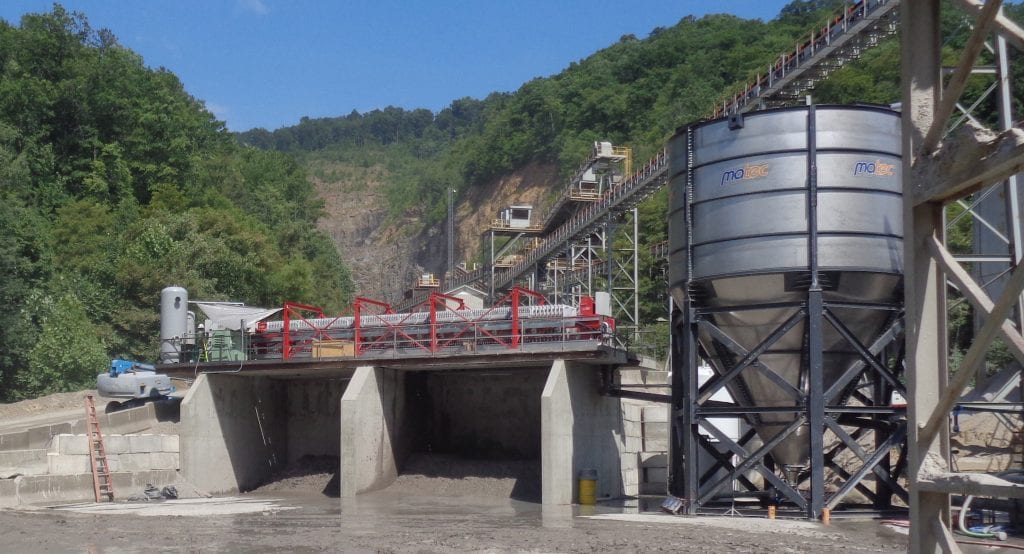What is a Filter Press and How Does it Work?
A filter press is one of the oldest and most reliable types of dewatering equipment, widely used in wastewater treatment across various industries. Its primary function is to separate solids from liquids, removing impurities and suspended particles from industrial wastewater. This process allows for easier waste handling and enables clean water to be returned to the system.
Filter presses operate by using pressure filtration across a filter media. Slurry is pumped into the press and dewatered under pressure, separating the liquid (filtrate) from the solids (cake).
Main Components of a Filter Press
Frame: Supports the entire system.
Filter Plates: Provide the structure for holding the filter cloth and forming the dewatering chambers.
Manifold: Includes piping and valves for slurry distribution and filtrate removal.
Filter Cloth: Essential for optimizing performance and capturing solids.
The design and size of a filter press depend on the volume and type of slurry being treated. ChemREADY offers a wide range of press types and capacities tailored to specific application needs.
A Brief History of the Filter Press
The filter press originated in the mid-19th century in the United Kingdom and was initially used to extract vegetable oil. Significant technological developments in the mid-20th century led to the automatic horizontal-type filter press. Today’s modern designs offer significantly lower energy and maintenance costs than belt presses or centrifuges, with operational costs as low as one-sixth of those alternatives.
Applications and Advantages
Filter presses are especially valued because the dewatered solids (filter cake) are easier and cheaper to handle than untreated slurry. Clean water recovered from the process can be discharged to local municipalities or reused in a closed-loop system.
- Common applications include:
- Mining and aggregates
- Ready-mix concrete washout recovery
- Food and beverage processing
- Marble and stone cutting
Compared to settling ponds, which require large space and ongoing maintenance, filter presses are a more efficient long-term solution. Settling ponds accumulate solids over time and lose effectiveness, requiring dredging or replacement.
How a Filter Press Works
During operation, slurry is pumped into the press and distributed evenly. Solids accumulate on the filter cloth, forming a “cake” within the plate chambers. Clean water exits through the filter plates via designated ports. Once the chambers are full, the filtration cycle ends, and the cake is released.
High-capacity presses often feature automatic plate shifters to speed up the process. Matec designs presses for fully automated, 24-hour operation, even in harsh environments like mines and chemical plants.
Customization and Optimization
Filter presses can be tailored to individual needs with options such as:
- Varying plate sizes and chamber numbers
- Cloth washing systems
- Drip trays and cake shields
High-pressure systems (21–30 bar) like those from Matec improve performance for even the most difficult slurries.
Industry Use
Industries that benefit from filter presses include:
- Food and beverage
- Chemicals
- Mining and aggregates
- Power generation
- Asphalt and cement
- Steel production
- Municipal water treatment
View Our Filter Press Products

Using Clarifiers with Filter Presses
Filter presses work best with slurries containing 50–60% solids. For lower solids content (5–10%), a clarifier should be used first. Clarifiers help concentrate solids via gravity and polymer flocculation before they reach the press.
Types of clarifiers include:
Vertical Deep Cone: Uses natural sedimentation.
Horizontal Rake Style: Uses mechanical rakes to stir and settle solids.
When used together, clarifiers and filter presses can recover up to 95% of process water.

Total Water Treatment from ChemREADY
ChemREADY provides comprehensive support for water treatment systems. Our team evaluates water chemistry to determine optimal chemical treatments (flocculants, coagulants, pH balancers) that work in tandem with mechanical systems like clarifiers and filter presses.
- Matec presses offer unique benefits:
- Fully automated operation
- Real automatic cloth washing
- Remote monitoring and support
- High-pressure filtration (up to 30 bar)
- Easy identification of faulty cloths
- Efficient cake release with gasser shakers
Whether you’re a small business or a large industrial operation, ChemREADY can help you implement a complete and cost-effective dewatering solution.
Read our useful Water Facts blog Can my Small Operation Afford a Filter Press? to learn more.
About The Author
Nick Piskura is the Marketing and Web Development Specialist at ChemREADY who utilizes expertise in digital marketing strategies to provide knowledgeable insights in each segment of our business. Nick provides insights through web development and multimedia resources that support ChemREADY’s full range of services, including Legionella management, ANSI/AAMI ST108 compliance, boiler and cooling tower treatment, wastewater processing, and industrial water quality solutions.

